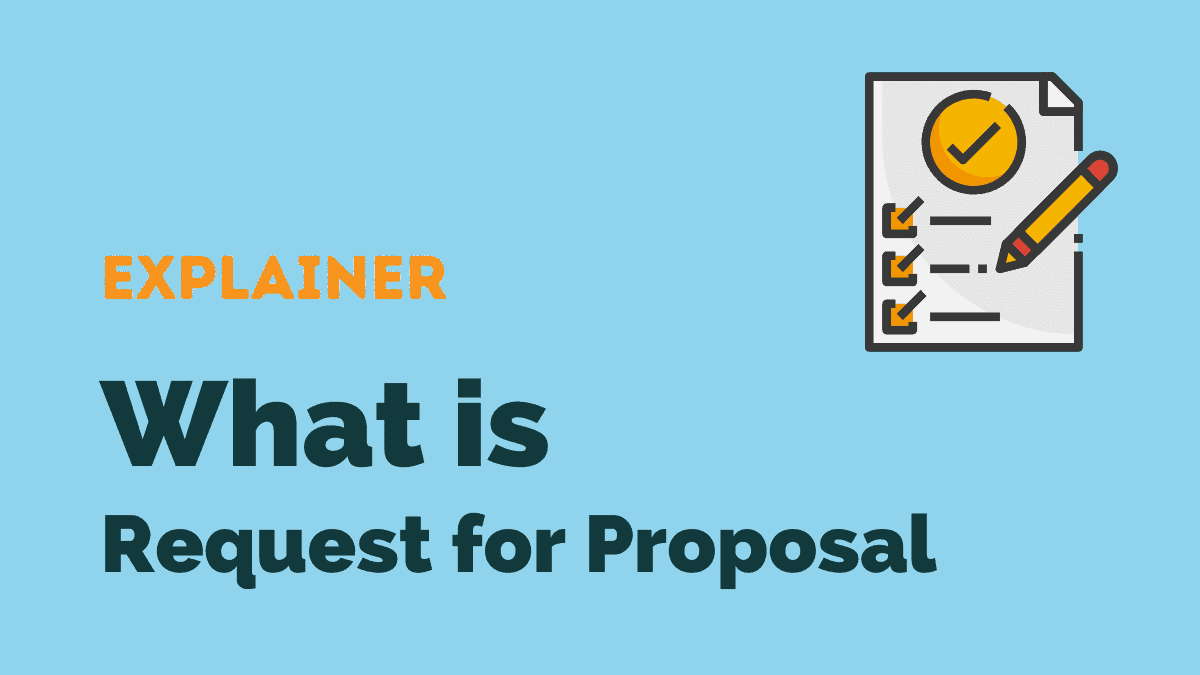A request for proposal (RFP) is a formal document that a large enterprise or government agency posts to purchase a good or service.
The RFP gives information on the organization’s intention and what they are looking for, and describes every criterion vendors will evaluate.
This article will explain what makes a great RFP, how to respond to them, and the difference between RFP, RFQ & RFI.
Let’s dive in!
What makes a great RFP?
A great RFP ensures you get the right partner. Here are critical features you need to look at in an RFP to get the perfect match:
Executive summary or introduction
The introduction gives an overview of the project, an introduction to the company and its values. A great intro will inform you what you anticipate finding and which requirements are needed for your services.
Business summary and background
Successful RFPs are descriptive and give insight into the values and goals of the company. They explain what makes the company unique and why what they do matters.

Project goals and target audience
A great RFP explains the project’s target audience and goals.
Scope of project
RFPs should be clear and thorough with the company’s expectations for the project. Once they choose you, you don’t need to ask basic questions based on content strategy, project management, specific features, industry restraints, etc.
Timeline
An RFP should tell you how long you’ll tackle the project. It explains deadlines, timeline details, and whether the project will be launched with other products.
Proposal structure
Great RFPs tell vendors how to structure their proposals, which formats to use, and what to include.
Budget
A company should provide a specific budget for the project or a price range.
How to respond to an RFP / Dos and Don’ts
Do: Read RFP instructions
Reading helps you pick up on the tone and style of the client’s communication and what they need from you.
Do: Avoid fluff when answering questions
Ensure answers are direct to the point, legible, and understandable. If you aren’t specific and direct, you won’t get the part to pursue the project.
Do: Make a checklist
Make a list of what the client needs and cross it out once you are ready. List all documents, guidelines, and the company’s expectations and values.
Don’t write template answers
Don’t write to fill the space with robotic answers. Write in a professional manner that incorporates your values and proofread after writing.
Don’t write hurriedly
Companies open all proposals on the due date. Ensure you have cleared up everything and provided the documents in the proper format. Companies don’t accept fast, sloppy responses.
Don’t submit incomplete proposals
Many RFPs need a specific format, and if you don’t follow it, the company quickly disqualifies it. Answer each detail and provide all requirements and documents.
RFP vs. RFQ vs. RFI
RFI, RFP and RFQ are crucial tools that help you save money, reduce risk, and pick the perfect match.
Here are the definitions for each:
- RFI (Request for information) is a document that a company educates and explores vendors’ potential solutions. The document includes market details, general information, and solution ideas.
- RFP (Request for proposal) is a questionnaire companies or buyers use to get critical information from prospective vendors. RFP evaluates vendors and documents selection justification.
- RFQ (Request for quote/quotation) is a document that shows a buyer’s needs and asks vendors to respond with a costing proposal.
Conclusion
A request for proposal (RFP) is a formal document that a large enterprise or government agency posts to purchase a good or service.
Executive summary or introduction, project goals and target audience, timeline, project, budget, proposal structure are features that make a great RFP. Avoid fluff when responding to clients, make a checklist, and don’t write hurriedly.




